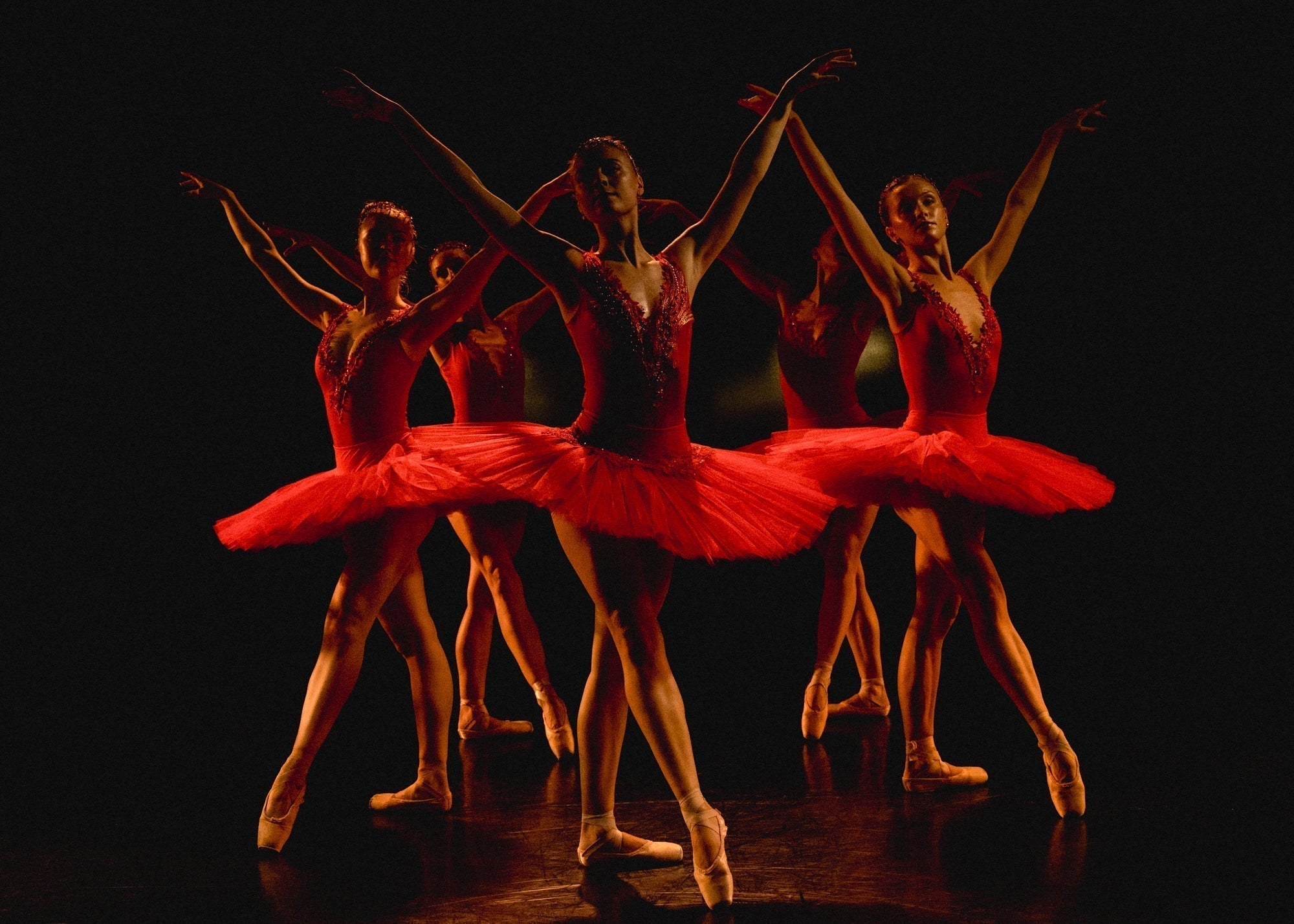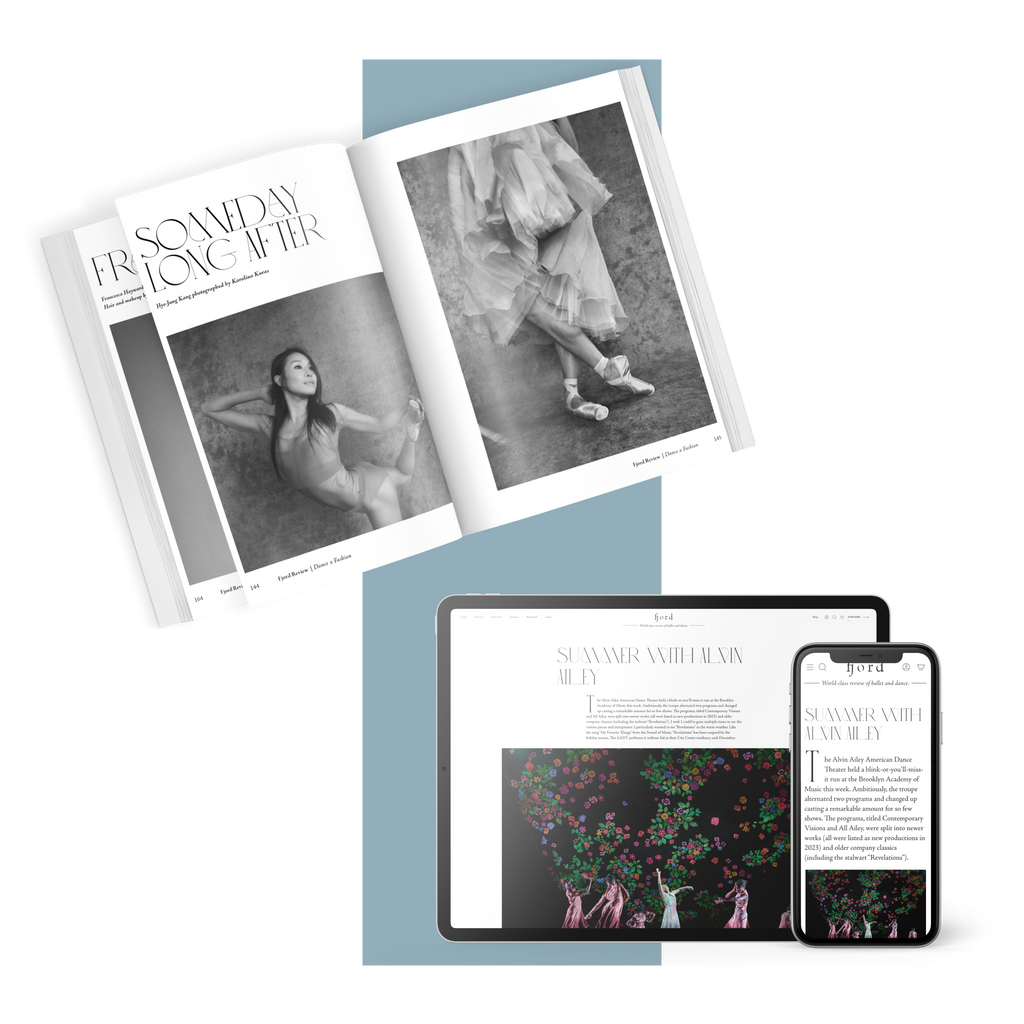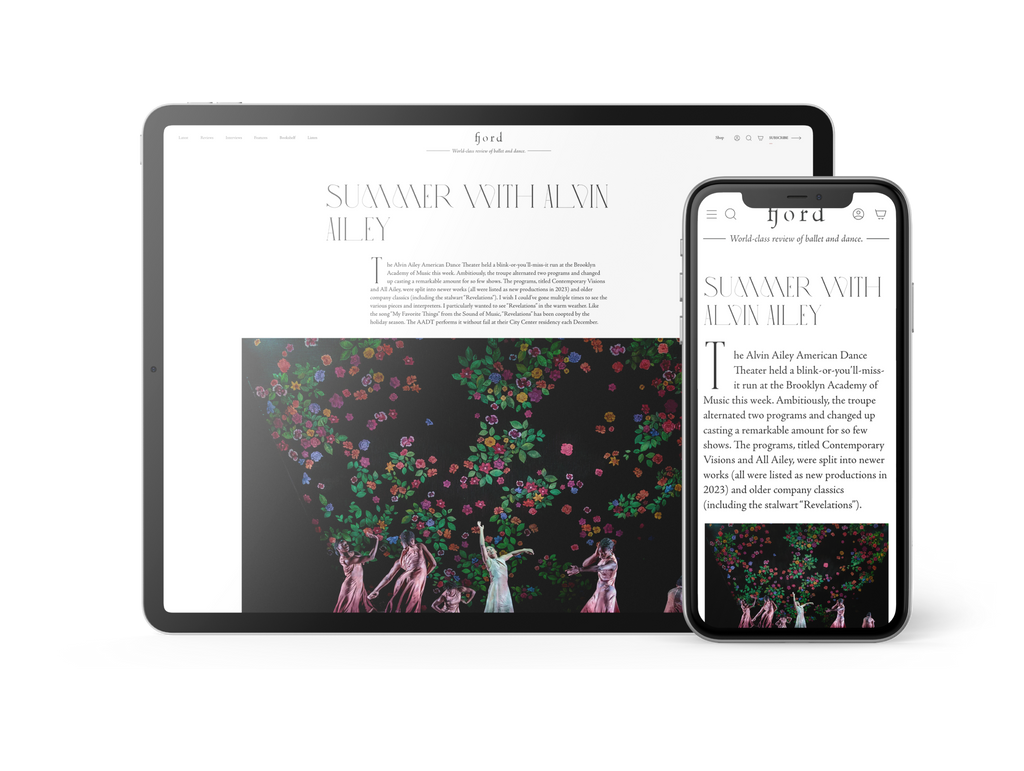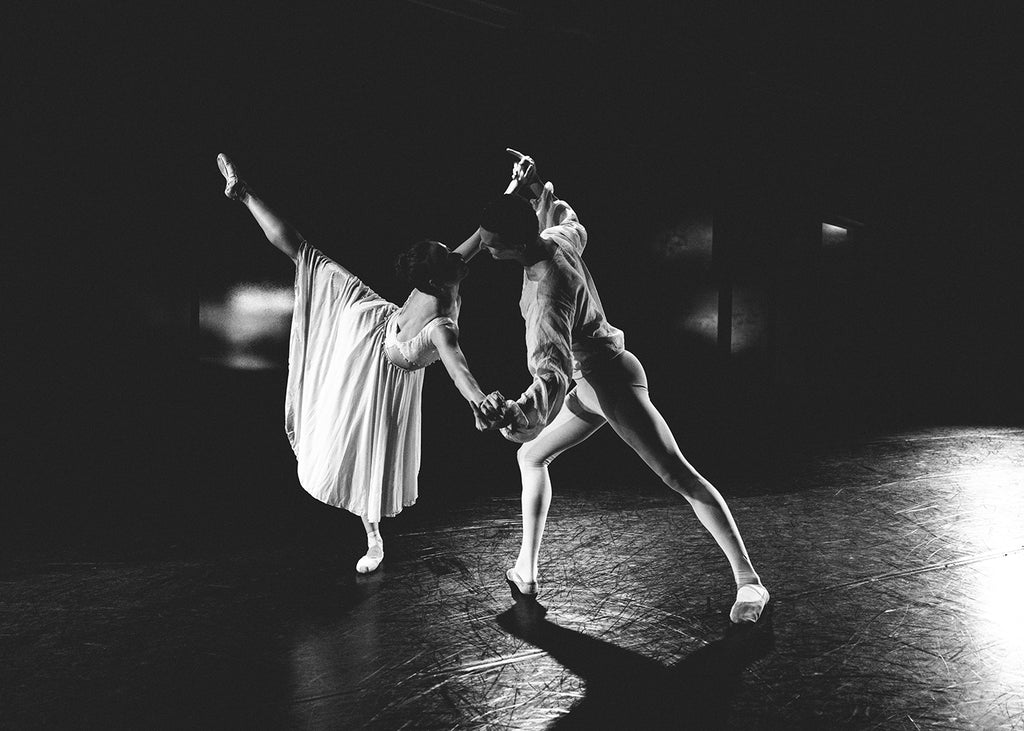Abetted by the tall mirrors creating kaleidoscopic reflections of the performers, a stunning Annette Cherkasov proved a haunting, determined figure of Death, her black garbed cohorts arachnid-like in their unison crouching, as well as executing difficult and deep backward bends after landing on one knee. This position recurred time and again, and with the cast so close to the audience, the intricacy of the move was too often revealed in their faces, accentuated by the throbbing of the string accompaniment.
In numerous entrances and exits, the dancers, deploying tiny bourrées and backwards leaps, kept the action moving. And with Szentes partnering a serene-faced Steckmann, who occasionally looked as if she were floating across the stage, the pairing gave the dance a certain cohesiveness. This was fluidity personified, until, that is, Death drew nigh.
After a slight, lights-out pause, Steckmann was next seen lying on a trio of acrylic pedestals as the dirge-like strings echoed throughout the room, with Cherkasov soon approaching, her arms spread, her fingers filigreed. And talk about back bends! Seriously, Death should always look so, well, pliant, her female accomplices soon returning to the scene.
Skittering backwards, pirouetting and repeating that down-on-one-knee move, these dancers resembled nothing less than exotic birds capable of forming diagonal lines and similar formations that, in a way, recalled Balanchine. But it was Szentes, though, whose solo, teeming with leaps, spins and beating feet, was dynamic enough to get Steckmann ambulatory, i.e., dance-ready again.
But it wasn’t exactly a prince’s kiss that roused her; it was, more than likely, the emotional power of the music, which continued unabated during a pause—which we would learn—was due to a major costume change.
And what a metamorphosis it was! Entering in scarlet costumes, replete with mini-sequined tiaras - and tutus so stiff they looked as if they’d been dipped in extract of Viagra—this contingency of terspichores also included Hannah Barr, Tatiana Burns, Ruthie Dalby and others, in an underworldly sequence of swirly hands and precise footwork spurred on by the score’s allegro vivace.
Szentes and Steckmann (also clothed in red), moved like fireflies—or firebirds, take your pick—in this red-hot finale, where Cherkasov jetéed into the abyss, and no lift was too high for our cherished couple, as the tutu brigade, among them, Madeline Duritza, Emma Maples and Sofie Treibitz, served up an impressive movement vocabulary courtesy of Jones.











comments